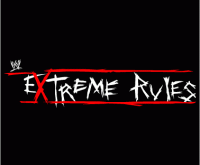The ERTC and Employee Retention Tax Credits

The ERTC is a type of disaster recovery Tax Credits. This credit is intended to offset the economic impact of a disaster or pandemic. It is available to both individuals and businesses. The ERTC has several requirements that must be met to receive it. These requirements vary depending on the type of disaster. You can learn more about the ERTC by reading this article. This article will also cover payroll tax returns and quarterly returns.
Tax Relief
If your company meets the eligibility requirements, it can claim the EITC tax credit. This credit is available to qualifying employers for wages paid during the qualifying period, and ERTC is typically only available for small businesses with fewer than 100 full-time employees. To qualify for this credit, your company must report the total amount of qualified wages paid to employees on its quarterly tax returns.
However, the qualification process is highly complex and requires substantial time and effort. Small-to-mid-size businesses need more time and expertise to determine whether their business has been impacted by a pandemic and calculate the credit’s benefit. Moreover, many businesses don’t believe that they qualify for ERTCs, as they didn’t suffer a significant decrease in gross receipts.
The ERTC tax credit can be a valuable incentive for employers to keep employees. This credit varies according to the size of your business and its gross receipts. If your employees are precious to you, consider applying for this credit.
employee retention tax credit
The Employee Retention Tax Credit is a tax credit that can help your business retain employees. It is a 50% credit of qualifying wages. Eligible employers can claim this credit up to a limit of $10k per quarter. However, larger employers may be subject to complicated calculations. To qualify, you must meet the following requirements:
An eligible employer must have fewer than 100 employees. The credit is based on wages that are subject to FICA taxes. The credits apply to wages paid between March 12 and September 30, 2021. For recovery startup businesses, the credit is available through December 31, 2021. This credit may help companies retain their employees.
The Employee Retention Tax Credit (ERC) can reward businesses that keep employees during the COVID-19 pandemic. The credit is worth up to $26,000 per employee and may be applied retroactively to employees who started working during the pandemic. Regardless of size, businesses may qualify if they retained employees during this period of economic instability.
quarterly returns
Employers can claim the Employee Retention Tax Credit by filing an amended quarterly payroll tax return, Form 941X, and the I.R.S. will send a check for the credit amount plus interest. However, the tax credit can only be claimed for the wages paid during the quarter it was earned, not for the total amount paid. The deadline for filing an amended quarterly payroll tax return is July 2023. There is a backlog in processing claims, so that the refund can take nine to twelve months.
If the ERTC is not restored to Q4 as soon as possible, restaurants could be hit with an unexpected tax “claw-back” on their tax bills. This would be devastating for struggling businesses. This scenario has been shared with lawmakers by the Restaurant Association, and the Association is working to restore the credit.
To qualify for the ERTC, a restaurant must reduce its gross receipts by 20% or more annually. If the company has fewer than 20 employees, it can claim up to $7,000 per employee per quarter. If it employs 30 employees, it could receive a tax credit of $630,000 in 2021.
payroll tax return
The Employee Retention Tax Credit (ERTC) is a tax credit available to employers who retain key employees. This tax credit can help companies retain key employees during difficult times. However, employers must first determine if they are eligible for this credit. The amount of ERTC, an employer, can receive is based on the number of full-time employees on its payroll.
During the current tax year, employers who hired employees before the tax law changed can claim an ERTC for qualified wages paid between March 13 and September 30, 2021. Employers who miss the deadline for claiming this credit must amend their payroll tax return or schedule to claim it.
ERC Today is a full-service company that can calculate and file your company’s ERTC tax credit. They have experience helping companies of all sizes claim this tax credit. They also provide free consultations, are 100% I.R.S. compliant, and have very high success rates.
E.C.R.
The ERC tax credit is a financial incentive for small businesses. It is calculated at 70% of qualifying wages. The maximum credit is $21,000 per employee per calendar year. However, eligibility requirements vary depending on the type of business. Small employers can claim credit on all wages they pay during the qualifying period. Large employers, however, cannot claim ERC on wages paid to employees who are not working.
If you have a part-time employee, you may still be eligible to claim E.C.R. You can also combine your part-time hours to make up the equivalent of full-time employment. You may be eligible to claim the credit on your payroll taxes if you have a large enough payroll. However, you must note that you cannot claim an E.C.R. if you cannot pay the required tax.
You should consider filing amended returns if you have deducted qualified wages or overstated them. Be cautious of direct solicitations and advertising schemes that may claim to offer ERC. As a taxpayer, you are ultimately responsible for reporting the facts on your income tax return, so claiming an ERC incorrectly may cost you a lot of money.
Credit amount creates a reduction.
ERC is a tax credit that employers can claim to offset federal income taxes. Eligible wages are reported on Form 941 by an eligible employer. However, after the end of the 3rd quarter of 2021, the ERC will no longer apply to payroll tax returns. After that date, the ERC is only available through an amended payroll tax return.
ERC credits are refundable tax credits companies can claim if they have more than 50 employees. In 2021, employers with more than 100 employees can claim the credit based on their total number of workers. Large employers with “severely financially distressed” status may be eligible for the ERC credit based on all workers. In addition, large employers that continue to provide services to their employees may claim the ERC credit based on the number of workers during that year.
Are Eric credits
The Employee Retention Tax Credit (ERTC) helps employers retain their employees. This credit is fully refundable and applied to a portion of the employer’s payroll taxes and is also available for retroactive payments to businesses. Eligible employers include companies of all sizes, nonprofits, and individuals.
To claim an ERTC, employers must file a form with the I.R.S. It must include information about the company and documentation showing how the pandemic affected the business. Once approved, the I.R.S. will assess the application and apply the credit to future payroll taxes. Depending on the number of employees, an employer can receive up to $630,000 in tax credits over a year.
The ERTC program is not well known, and only 4% of small business owners know it. The program aims to reward eligible employers for retaining their employees during difficult times.
conclusion
The ERTC tax credit is a type of tax credit that employers can use to offset certain federal taxes. For example, it can offset the 6.2% federal social security tax and the Railroad Retirement Act tax that an employer must pay. Sometimes, an employer may qualify for the credit even if its operations are suspended during the COVID-19-related lockdown.
The Employee Retention Tax Credit was introduced as a supplement to incentive programs and employee retention tools. It is a refundable payroll tax credit that can be claimed on qualified employee wages and health plan expenses. It was initially introduced retroactively to September 30, 2020, but was extended again through the end of 2021 through the American Rescue Plan Act (ARPA). This act also allows small businesses to claim ERTC.
The C.A.A. made several changes to the ERTC. These changes reduced businesses’ capacity and the revenue that the companies could earn. As a result, transportation companies faced significant losses in revenue in 2020 and 2021.


